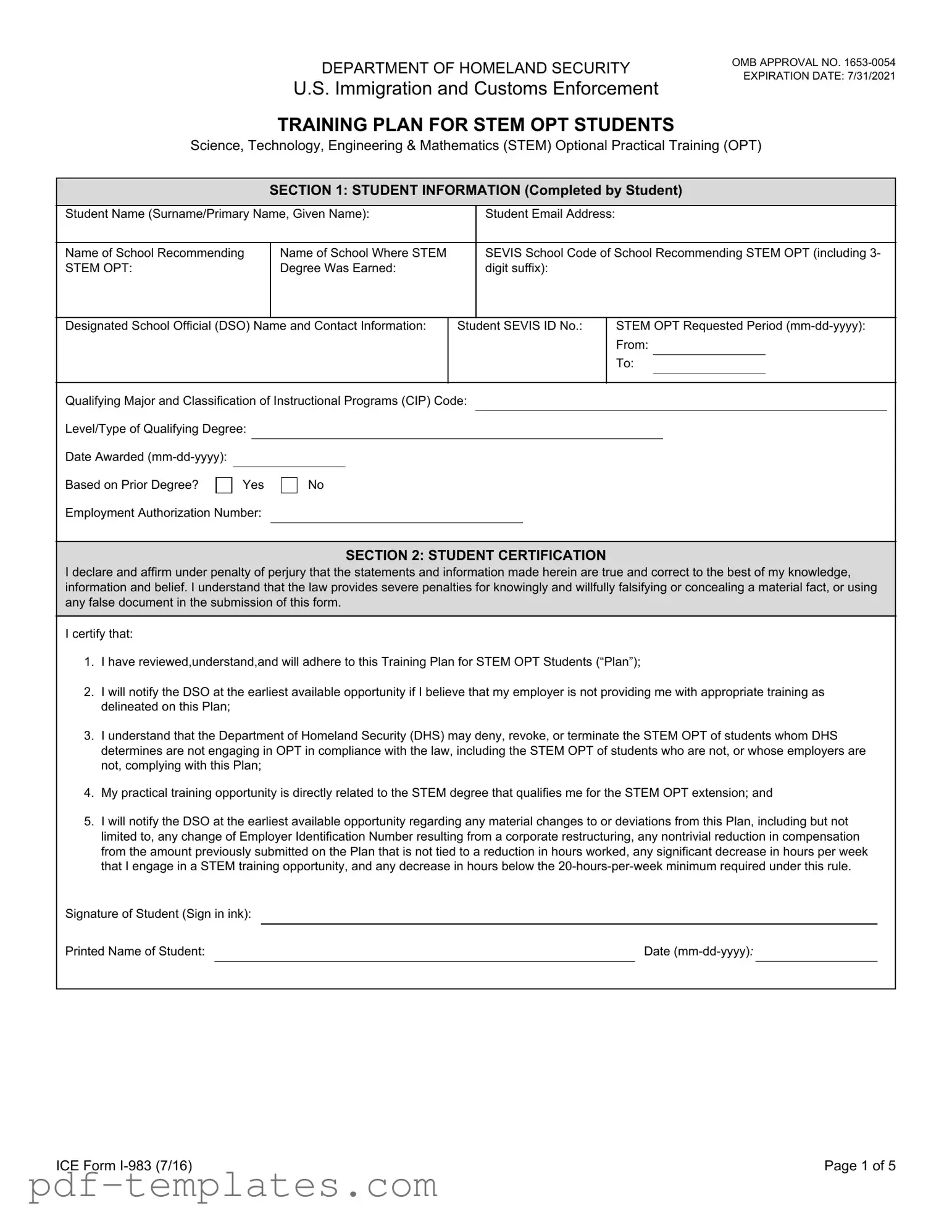The ICE I-983 form, which is used for STEM Optional Practical Training (OPT), shares similarities with the Form I-20. The Form I-20 is issued by educational institutions to international students. It serves as proof of enrollment and eligibility for F-1 student status. Like the I-983, the Form I-20 outlines the student’s program of study and the institution's responsibilities. Both documents are essential for maintaining legal status in the United States as they provide necessary information about the student’s educational journey and compliance with immigration regulations.
Another document similar to the I-983 is the Form I-765, Application for Employment Authorization. This form allows eligible individuals to request permission to work in the United States. Like the I-983, the I-765 requires detailed information about the applicant’s background and the nature of the employment. Both forms are critical in ensuring that international students can engage in practical training that complements their academic studies while adhering to U.S. immigration laws.
The SEVIS Form is also comparable to the I-983. SEVIS, or the Student and Exchange Visitor Information System, tracks international students in the U.S. This form contains information about the student’s status, school, and program. Similar to the I-983, the SEVIS Form is crucial for maintaining compliance with immigration rules. It ensures that the student’s information is up-to-date and that they are participating in their designated program.
Understanding the various forms related to student training and employment is crucial for both students and employers. For instance, the USCIS I-9 form is a key document for verifying work eligibility, and resources to help with this can be found at https://documentonline.org/blank-uscis-i-9. This ensures that adherence to employment laws is maintained, giving clarity on the necessary steps for legal employment.
The Form DS-2019 is another document that shares characteristics with the I-983. This form is used for J-1 visa holders, who are often involved in exchange programs. Like the I-983, the DS-2019 outlines the participant's program details and the responsibilities of the sponsoring organization. Both forms are integral in helping maintain the legal status of individuals participating in educational and training programs in the U.S.
The Form I-94 is also relevant to the discussion. This form is the arrival and departure record issued to foreign visitors. It documents the individual’s entry into the United States and their visa status. Similar to the I-983, the I-94 is essential for understanding an individual’s legal status and ensuring compliance with immigration laws. Both documents play a role in monitoring the activities of international students and their adherence to the terms of their visas.
Lastly, the Employment Offer Letter can be compared to the I-983. This letter is typically provided by the employer to confirm a job offer. It outlines the terms of employment, including job title and responsibilities. Like the I-983, the Employment Offer Letter is important for establishing the nature of the work that a student will engage in during their practical training. Both documents help to clarify the relationship between the student and the employer, ensuring that the employment aligns with the student’s educational objectives.
